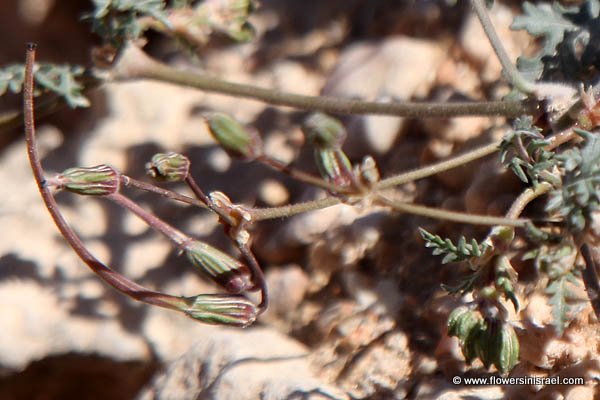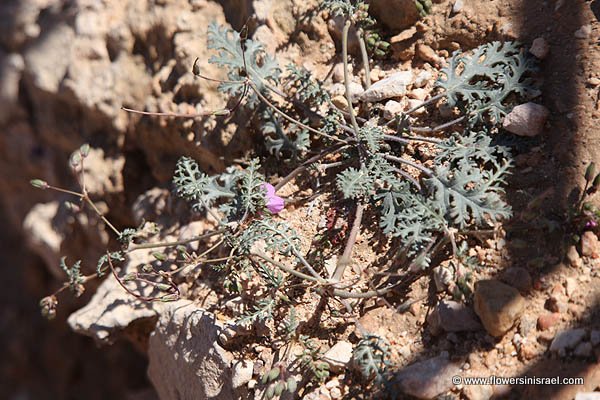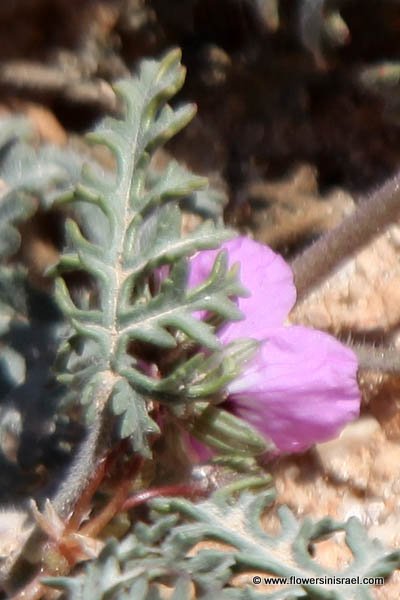Hebrew: מקור חסידה שעיר, Arabic: الرقمة سميكة الأوراق
| Scientific name: | Erodium crassifolium L'Her. | |
| Synonym name: | Erodium hirtum Willd. | |
| Common name: | Hoary-leaved Heron's-bill | |
| Hebrew name: | מקור חסידה שעיר | |
| Arabic name: | الرقمة سميكة الأوراق | |
| Plant Family: | Geraniaceae, גרניים |

|
| Life form: | Hemicryptophyte (=buds at or near the soil surface) | |
| Stems: | Develops tubers on its roots; suffruticose branching stem; flowering branches erect, slender, reddish brown, thickly clothed with unequal villous hairs; | |
| Leaves: | Alternate, rosette, pinnated or deeply lacinated leaves; stipule | |
| Flowers: | Hermaphrodite; pink, violet; peduncles many flowered | |
| Fruits / pods: | Capsules pubescent; aristae above 7.5cm long, spirally twisted, feathered inside, the outside pubescent | |
| Flowering Period: | February, March, April, May | |
| Habitat: | Shrub-steppes, Desert | |
| Distribution: | Mediterranean Woodlands and Shrublands, Semi-steppe shrublands, Shrub-steppes, Deserts and extreme deserts | |
| Chorotype: | Saharo-Arabian | |
| Summer shedding: | Ephemeral |

Derivation of the botanical name: Erodium, Greek: erodiós or ερωδιός, a heron; the carpels of these plants resemble the head and beak of a heron. crassifolium, crassus, solid, thick, fat, dense; folium, leaf; thick leaves. hirtum, hirtus, hairy, shaggy, rough, uncultivated; hairy. The Hebrew word: מקור-חסידה, makor chasida / stork beak, is a mistake in the translation (chasida means stork). In Greek, the stork is called Πελασγός pelargos, pelargonium.

Location: Negev, Avdat |